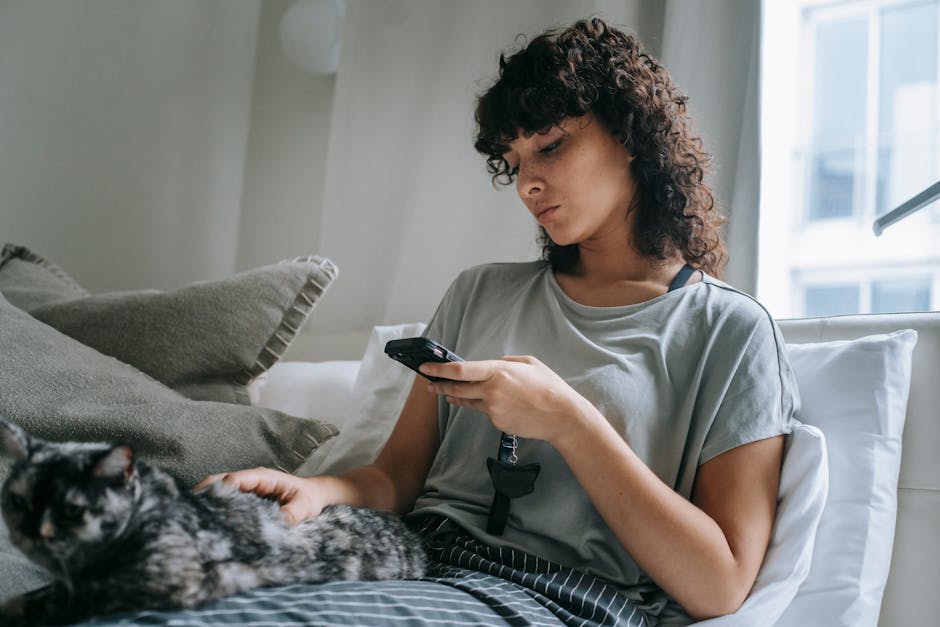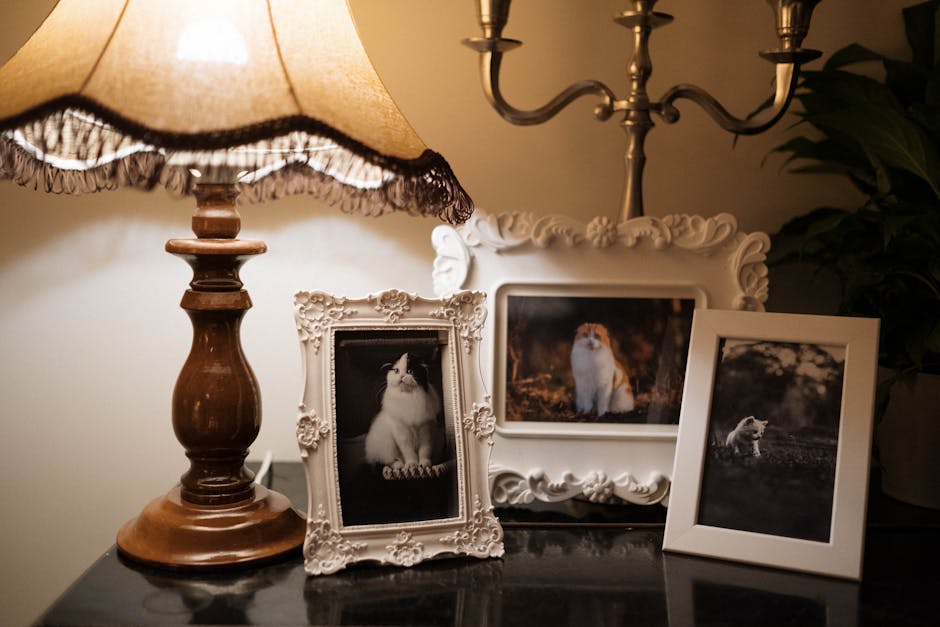Cats have been domesticated for thousands of years, and they have become an integral part of modern households. Though many people believe that cats are aloof creatures, they can form strong bonds with their owners. However, many cat owners are left to wonder - how do cats recognize their owners? While cats may not show their affection in the same way as dogs, they do have unique ways of identifying and connecting with their human companions. In this article, we will explore the ways in which cats recognize and bond with their owners.
Sense of smell: Explain how cats rely on their sense of smell to recognize their owners

Cats have a remarkable sense of smell that plays a vital role in recognizing not only their owners but also other animals and scents in their surroundings. The olfactory abilities of cats are approximately 14 times higher than that of humans, thanks to the presence of numerous scent receptors in their nostrils.
Cats can pick up their owner's scent from their clothes, shoes, and even the belongings left behind. They have a highly sensitive olfactory ability that helps them to identify their owner's unique scent, even from a distance. This is why you might have noticed your cat sniffing around your shoes or clothes as soon as you enter the house.
In addition, cats have special scent glands located under their chins, forehead, and cheeks. These glands produce pheromones or chemical signals that are unique to each cat. When cats rub their faces and bodies against their owners, they mark them with these pheromones as a sign of affection and ownership.
In summary, cats rely heavily on their sense of smell to recognize their owners. They have a highly sensitive olfactory ability, and their special scent glands produce pheromones unique to each cat that helps in recognizing their owner's scent.
Familiarity with voice: Discuss how cats can distinguish their owner's voice from others (3)

Cats have excellent hearing abilities, they can detect even slight variations in sound. Hence, it is no surprise that cats can recognize their owner's voice from far away. When you call your cat's name, your cat can easily identify your voice and come running towards you. In fact, studies indicate that cats pay more attention to a human voice than any other sound. Owing to this, over time, cats become familiar with their owners' voice and tonal variations.
When a cat hears their owner's voice, they associate it with certain experiences. They hear your voice when you feed them, brush them, or play with them. As a result, your cat connects the sound of your voice with positive associations that make them feel safe, comfortable, and loved. Due to this familiarity with their owner's voice, cats can effectively recognize their owners even when they're in a different room or outside the house.
In conclusion, the bond between a cat and their owner is built on trust, familiarity, and love. Familiarity with their owner's voice is just one of the many ways that contributes to their strong bond.
Body language: Mention how cats recognize their owner's body language and habits (4)

Cats are very observant and attentive to their surroundings. They can pick up on subtle cues from their owners' body language and habits. For example, a cat may recognize their owner's specific way of walking or sitting. They also pay attention to their owner's facial expressions and tone of voice. If their owner is feeling stressed or anxious, the cat may pick up on these emotional cues and adjust their behavior accordingly. Overall, cats have a unique ability to recognize and respond to their owner's individual body language and habits.
Ownership of certain items: Explain how cats associate certain items with their owners, such as a favorite chair or bed (5)

Cats are not only known for their cleanliness and playfulness but also for the strong bonds they share with their owners. One of the most interesting aspects of feline behavior is how they associate certain items with their owners. For example, if a cat has a favorite chair or bed, it may become territorial and claim that spot as its own.
Cats have a powerful sense of smell, which plays a big role in recognizing their owner's scent. They identify the scent left behind on objects that their owners use most frequently, such as a pillow or blanket. As a result, cats become attached to these items and start to associate them with their owners.
Furthermore, cats are creatures of habit and thrive on routine. If the owner spends most of their time sitting in a particular chair or sleeping in a certain bed, the cat will quickly pick up on this behavior and come to associate these items with their owner's presence. This is why cats will often jump into their owner's lap as soon as they sit down in their favorite chair.
In conclusion, cats have a remarkable ability to recognize their owners not only by sight, but also by scent and association with certain items. By understanding how cats recognize their owners, we can continue to build stronger relationships with these fascinating creatures.
Use of pheromones: Describe how cats use pheromones to mark their owner as familiar (6)

Cats use pheromones to communicate with their owners and other cats. Through a complex system of scent markers, these feline companions can identify familiar individuals and mark their territory. Pheromones are natural chemicals that are secreted by a cat's glands, and each cat has a unique scent that is identifiable to other cats.
When a cat rubs against its owner or nuzzles their face, it is actually depositing pheromones that signal to other cats that the human is a friend and not a foe. The pheromones will also help the cat feel more secure and relaxed around its owner. This is why some cats will become anxious or grumpy when their owner returns from a trip, until they have had a chance to re-establish their scent.
Overall, the use of pheromones is an important part of how cats recognize and bond with their owners. By understanding how these chemicals work, we can build stronger relationships with our feline friends and provide them with the comfort and security they need to thrive.
Taste: Discuss how cats associate the taste of their owner's scent, such as from their skin or clothing, with comfort and familiarity (7)

Cats are known for their keen sense of smell, and they use it to recognize their owners as well. One way they do this is through taste. Cats associate the unique taste of their owner's scent with a feeling of comfort and familiarity. They can do this by licking their owner's skin or clothing, gathering their scent particles, and tasting them. This helps them create a mental map of their owner's scent and associate it with positive emotions. It's important to note, however, that cats have individual preferences and personalities, so not all cats may recognize their owners through taste alone.
Sight: Explain how cats recognize their owner's face and movements (8)

Cats are known for their excellent eyesight, which allows them to recognize their owners' facial features and movements. Studies have shown that cats have the ability to distinguish between different human faces, and they can remember facial features for a long time. In fact, cats rely heavily on their vision to recognize their owners, even from a distance.
When a cat looks at its owner, it takes in a lot of information through its eyes, including the shape of the face, the color of the eyes, and the movement of the mouth. This information is then stored in the cat's brain, allowing it to recognize its owner, even after a long period of separation.
Moreover, cats are known for their exceptional peripheral vision, which means they can see their surroundings without having to move their head or eyes. This allows them to notice even the slightest movements made by their owners, such as a wave or a nod of the head, which further reinforces their recognition of their owner.
In conclusion, sight plays a crucial role in how cats recognize their owners. With their keen eyesight and exceptional peripheral vision, cats are able to distinguish between different human faces and movements, allowing them to recognize their owners even from a distance.
Time spent together: Emphasize how cats form strong bonds with owners who spend significant amounts of time with them (9)

Cats, like most domesticated animals, seek the company of their owners. Spending time together is key to building strong bonds. When cats spend significant amounts of time with their owners, they recognize and respond to their owners' voices, smells, and body language. Cats may seek out their owners' attention, purr, knead, and rub their faces and bodies against their owners. Moreover, cats memorize their owners' schedules, routines and habits. They may anticipate their owners' return, greeting them at the door or lounging on their laps. Overall, time spent together is an important factor that enables cats to recognize and bond with their owners.




